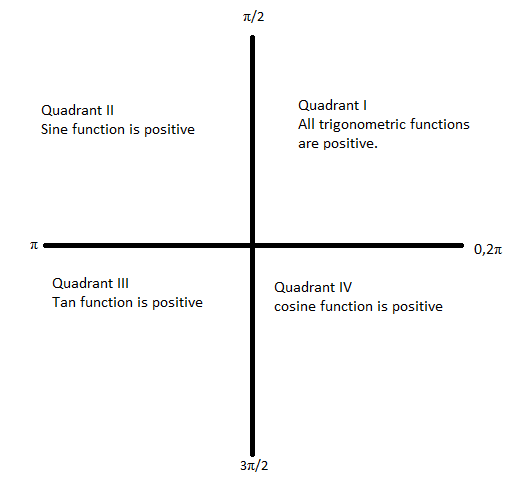
Prove the following:
$\dfrac{{\cos \left( {\pi + x} \right)\cos \left( { - x} \right)}}{{\sin \left( {\pi - x} \right)\cos \left( {\dfrac{\pi }{2} + x} \right)}} = {\cot ^2}x$
Answer
575.1k+ views
Hint: We can take each of the terms in the LHS and simplify them. Then we can write the LHS in the simplified terms , using $\cos \left( {\pi + x} \right) = - \cos x$,$\cos \left( { - x} \right) = \cos x$,$\sin \left( {\pi - x} \right) = \sin x$,$\cos \left( {\dfrac{\pi }{2} + x} \right) = - \sin x$,$\cot x = \dfrac{{\cos x}}{{\sin x}}$, and then simplify to get the required RHS. As the LHS and RHS are equal, we can say that the equation is true.
Complete step-by-step answer:
We need to prove that $\dfrac{{\cos \left( {\pi + x} \right)\cos \left( { - x} \right)}}{{\sin \left( {\pi - x} \right)\cos \left( {\dfrac{\pi }{2} + x} \right)}} = {\cot ^2}x$
So, we can take the LHS,
\[LHS = \dfrac{{\cos \left( {\pi + x} \right)\cos \left( { - x} \right)}}{{\sin \left( {\pi - x} \right)\cos \left( {\dfrac{\pi }{2} + x} \right)}}\]
We know that,
$\cos \left( {\pi + x} \right) = - \cos x$
$\cos \left( { - x} \right) = \cos x$
$\sin \left( {\pi - x} \right) = \sin x$
$\cos \left( {\dfrac{\pi }{2} + x} \right) = - \sin x$
We can substitute the above equation in the LHS
$ \Rightarrow LHS = \dfrac{{ - \cos \left( x \right)\cos \left( x \right)}}{{\sin \left( x \right)\left( { - \sin \left( x \right)} \right)}}$
On simplifying, we get,
$LHS = \dfrac{{{{\cos }^2}\left( x \right)}}{{{{\sin }^2}\left( x \right)}}$
Using the relation $\cot x = \dfrac{{\cos x}}{{\sin x}}$, we get,
$LHS = {\cot ^2}x$
As the RHS is also \[{\cot ^2}x\] we can write,
$LHS = RHS$.
Hence the equation is proved.
Note: We must be familiar with the following trigonometric identities used in this problem.
1. $\cos \left( {\dfrac{\pi }{2} + x} \right) = - \sin x$
2.$\cos \left( {\pi + x} \right) = - \cos x$
3.$\cos \left( { - x} \right) = \cos x$
4.$\sin \left( {\pi - x} \right) = \sin x$
Adding $\pi $ or multiples of $\pi $ with the angle retains the ratio and adding $\dfrac{\pi }{2}$ or odd multiples of $\dfrac{\pi }{2}$ will change the ratio. While converting the angles we must take care of the sign of the ratio in its respective quadrant. In the 1st quadrant all the trigonometric ratios are positive. In the 2nd quadrant only sine and sec are positive. In the third quadrant, only tan and cot are positive and in the fourth quadrant, only cos and sec are positive. The following figure gives us an idea about the signs of different trigonometric functions. The angle measured in the counter clockwise direction is taken as positive and angle measured in the clockwise direction is taken as negative.

Complete step-by-step answer:
We need to prove that $\dfrac{{\cos \left( {\pi + x} \right)\cos \left( { - x} \right)}}{{\sin \left( {\pi - x} \right)\cos \left( {\dfrac{\pi }{2} + x} \right)}} = {\cot ^2}x$
So, we can take the LHS,
\[LHS = \dfrac{{\cos \left( {\pi + x} \right)\cos \left( { - x} \right)}}{{\sin \left( {\pi - x} \right)\cos \left( {\dfrac{\pi }{2} + x} \right)}}\]
We know that,
$\cos \left( {\pi + x} \right) = - \cos x$
$\cos \left( { - x} \right) = \cos x$
$\sin \left( {\pi - x} \right) = \sin x$
$\cos \left( {\dfrac{\pi }{2} + x} \right) = - \sin x$
We can substitute the above equation in the LHS
$ \Rightarrow LHS = \dfrac{{ - \cos \left( x \right)\cos \left( x \right)}}{{\sin \left( x \right)\left( { - \sin \left( x \right)} \right)}}$
On simplifying, we get,
$LHS = \dfrac{{{{\cos }^2}\left( x \right)}}{{{{\sin }^2}\left( x \right)}}$
Using the relation $\cot x = \dfrac{{\cos x}}{{\sin x}}$, we get,
$LHS = {\cot ^2}x$
As the RHS is also \[{\cot ^2}x\] we can write,
$LHS = RHS$.
Hence the equation is proved.
Note: We must be familiar with the following trigonometric identities used in this problem.
1. $\cos \left( {\dfrac{\pi }{2} + x} \right) = - \sin x$
2.$\cos \left( {\pi + x} \right) = - \cos x$
3.$\cos \left( { - x} \right) = \cos x$
4.$\sin \left( {\pi - x} \right) = \sin x$
Adding $\pi $ or multiples of $\pi $ with the angle retains the ratio and adding $\dfrac{\pi }{2}$ or odd multiples of $\dfrac{\pi }{2}$ will change the ratio. While converting the angles we must take care of the sign of the ratio in its respective quadrant. In the 1st quadrant all the trigonometric ratios are positive. In the 2nd quadrant only sine and sec are positive. In the third quadrant, only tan and cot are positive and in the fourth quadrant, only cos and sec are positive. The following figure gives us an idea about the signs of different trigonometric functions. The angle measured in the counter clockwise direction is taken as positive and angle measured in the clockwise direction is taken as negative.

Recently Updated Pages
Master Class 12 Business Studies: Engaging Questions & Answers for Success

Master Class 12 Economics: Engaging Questions & Answers for Success

Master Class 12 English: Engaging Questions & Answers for Success

Master Class 12 Maths: Engaging Questions & Answers for Success

Master Class 12 Social Science: Engaging Questions & Answers for Success

Master Class 12 Chemistry: Engaging Questions & Answers for Success

Trending doubts
What is meant by exothermic and endothermic reactions class 11 chemistry CBSE

Which animal has three hearts class 11 biology CBSE

10 examples of friction in our daily life

One Metric ton is equal to kg A 10000 B 1000 C 100 class 11 physics CBSE

1 Quintal is equal to a 110 kg b 10 kg c 100kg d 1000 class 11 physics CBSE

Difference Between Prokaryotic Cells and Eukaryotic Cells




